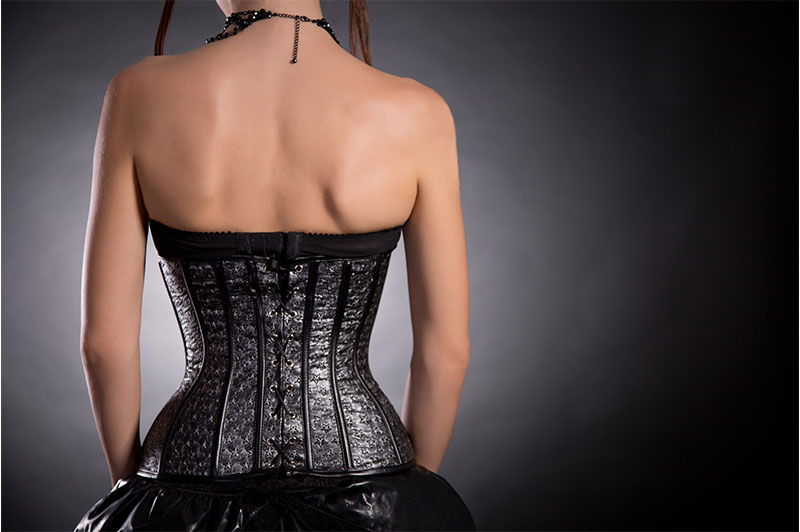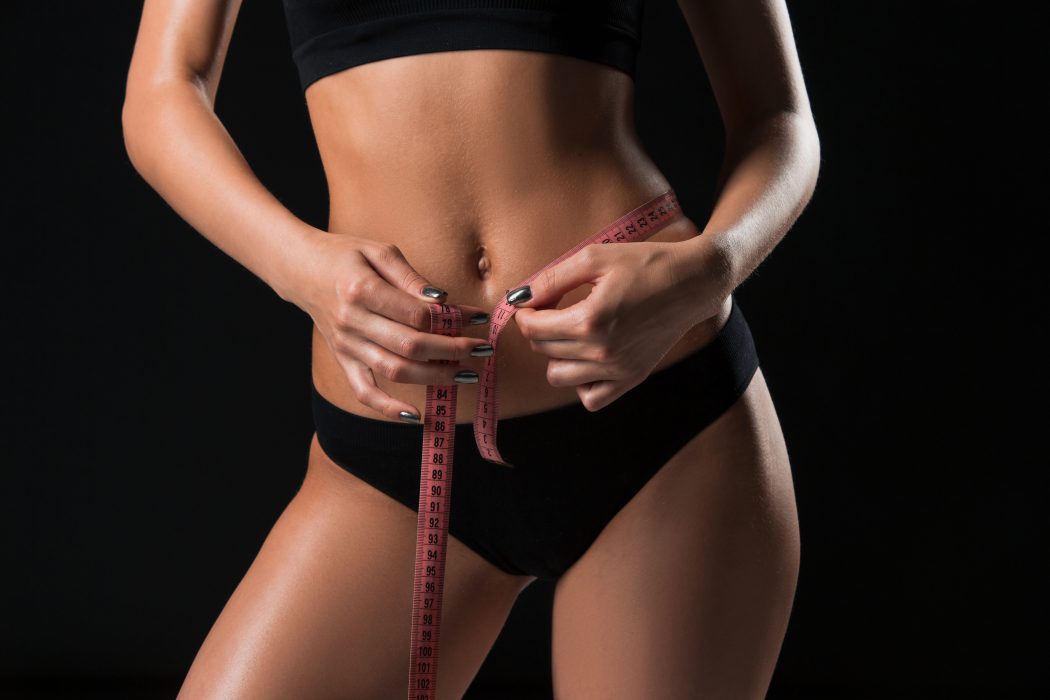Waist training is the latest Hollywood fitness craze to hit the mainstream. Favoured by A-listers and popularised by the Kardashians, these wide elasticated belts known as waist trainers or waist cinchers, are purported to ‘train’ your tummy to shrink down and hold a smaller, firmer shape. While not a new phenomenon – after all, corsets were used to achieve tiny waists in the Victorian era – social media snaps of the likes of Kim K wearing a modern-day latex version have led to a huge rise in popularity of this type of body shaping.
It’s easy to see the allure – in today’s image-obsessed era, where the perfect life and happiness seem to hinge on possessing killer curves, who wouldn’t want to find a quick and effective solution? Experts claim that by wearing this shapewear for just 4 hours a day, we can bypass spending hours at the gym or punishing ourselves with a restricted diet and still achieve that perfect Insta-girl hourglass figure. We know that body shape can be moulded over time using steel-boned corsets, Dita von Teese style, but do these modern, supple waist trainers really work? Are they the holy grail of curve creation that celebrities claim them to be? Here we expose some key truths about this shapewear and whether it really works in the long term…
Reshaping causes redistribution
Yes, waist trainers will reduce your waist size. Any type of compression will make you appear slimmer in that area. However, some waist trainers simply displace the fat elsewhere, causing unsightly bulges that can conversely make you look bigger. Make sure you select the right waist cincher, to ensure you get the best silhouette. If you’re curvy, look at plus size shapewear companies to ensure you get the right fit and size for you. Just be aware that you can reduce the shape, but you won’t lose the weight. The fat has to go somewhere.

There’s no scientific evidence to support the claimed benefits
The theory behind waist training is that wearing one creates thermogenesis in the body, leading to the breakdown of fat and the elimination of harsh toxins and impurities, through perspiration. However, there’s no scientific evidence to support these claims. You will probably lose water weight and toxins by sweating more, but in terms of directly breaking down fat, this ideology remains sketchy. In fact, you’ll probably lose weight simply because the waist restriction makes eating large meals uncomfortable. One positive benefit of waist training is that it can improve your posture, however whether this directly improves core strength is also debatable.
The compression can be dangerous
Not only can waist trainers be extremely uncomfortable to wear, they’re also associated with several health problems, including:
- They can displace the position of internal organs, leading to potential kidney and lung issues; as well as problems with digestion, causing heartburn and acid reflux.
- If your waist trainer is too tight, it can impact your breathing. This can make you light-headed and is of particular concern if you plan to workout while waist training.
- Waist training can cause permanent damage in young girls, whose bodies are still developing.
- Sweating and irritation caused by the material can lead to skin infections.
It can affect mental health
We all love seeing the benefits of getting in shape – fitting back into those skinny jeans or that beloved bodycon dress we’d long ago given up on. However, there’s evidence that the psychological effect can be damaging. Not only will the shapewear act as a constant reminder that you’re not the perfect shape, leading to negative thoughts and lowering self-esteem; but seeing your waist shrink down can become addictive for those with an obsessive personality.

The benefits are temporary at best
Experts among the medical community don’t advocate waist training as a long-term solution for weight loss and improving your shape. Aesthetically they do work, cinching in your stomach and reducing your waist size by up to 4 inches. But sadly, the benefits are very short lived, disappearing as soon as you remove the shapewear. According to Dr.Dee, this quick-fix solution shouldn’t be used to replace the power of a healthy diet and a sensible workout routine.
So, if you’re thinking of investing in a waist trainer, we hope you’ll weigh up the long-term benefits and risks, deciding what’s right for you. Society places so much pressure on us to conform to unrealistic standards, aren’t we better off being the best we can be, with the natural body we’re gifted with, rather than chasing a constantly evolving ‘norm’?
- Unlocking Your Potential: How Golf Tuition Holidays Can Improve Your Game - January 25, 2024
- How Vintage Clothing Influences Modern Fashion - January 19, 2024
- How to Reduce Inflammation in the Body - January 31, 2023
- Women Fall and Winter Fashion 2022-23: Comfortable Elegance - November 8, 2022
- A Modern Guide To Mod Clothing - August 31, 2022
- The Benefits Of Getting A Hair Transplant - June 29, 2021
- What to Look for When Buying a Malaysian Condominium - June 17, 2021
- Looking after your skin in winter to avoid dry, dull and chapped skin - May 2, 2020
- Pick the Right Trench Coats for Women - January 3, 2020
- How to pick the right live wedding entertainment - October 1, 2019





